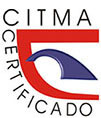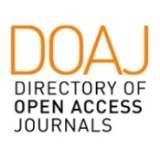The relationship between constructions and units in Spanish phraseology
Keywords:
construction Grammar, constructional idiom, collostructions, colocation, phrasal verb, imbrication principleAbstract
ABSTRACT
Introduction: For phraseological studies, the relationship between fixedness and variation is an essential one, given the need of updating some concepts after the epistemological shift of the grammatical theories which, for the first time, include phrasemes in their object of study. This article deals with the dichotomy opposing a unit (element selected in a paradigm available) and a construction (combination of available units).
Methods: The paper approaches the relationship between constructions and units in Spanish phraseology from the different views of: the Lexique-Grammaire school, Cognitive Grammar and the Grammar of Constructions. It starts with a review of the criteria of inclusion and exclusion, as well as the structural systemic analysis of a series of phraseological patterns for these trends, and then analyzes these theoretical considerations in a group of phraseological units.
Results: Phrasemes have an internal syntax, as constructions, and an external syntax, as units. The former governs the fixity and idiomaticity of the expression itself, the latter governs their combinations with their immediate context, making them doubly idiomatic: internally and as components of another phrasing, in which they are imbricated. This characteristic can affect collocations, idioms, LVC, phrasal verbs, proverbs or constructive idioms. The case of adverbial idioms is prototypical in this sense, since, although they are (by definition) totally invariable in their internal syntax, nothing prevents them from forming a larger phraseme with a lesser degree of fixity, forming an imbricated collocation with a verb or a verbal idiom.
Conclusions: We can say, without self-contradiction, that phrasemes are fixed and variable at the same time. The principle of imbrication links two syntactic levels corresponding to the different phraseological «spheres» (in Corpas´ sense): for the includer (collocation), fixity implies the norm, while, for the includer (idiom), it implies the system.
Downloads
References
ABRAÇADO, J. & MOREIRA, E.S. 2021 "Construções idiomáticas com o verbo pagar no português brasileiro". Domínios de Lingu@gem, 15 (4): 1153-1179.
ALFARO, L. A. 2014 Diccionario de expresiones y refranes al uso en Cuba y Canarias. Santa Clara: Editorial Capiro.
ALONSO RAMOS, M. 1993 Las funciones léxicas en el modelo lexicográfico de I. Mel’?uk. Madrid: UNED.
ÁLVAREZ DE LA GRANJA, M. 2005. "Proposta de clasificación semántico-funcional das unidades fraseoloxicas galegas". Cadernos de Fraseoloxia Galega, 4: 9-34.
APRESJAN, V. 2012. "The ‘Russian’ attitude to time". In: Filipovi?, L. & Jaszczolt, K.M (eds.) 2012. Space and time in languages and cultures: language, culture, and cognition. Amsterdam/ Philadelphia John Benjamins 103-120.
BALLY, Ch. 1909 Traité de stylistique française, 2 vol., Paris, Klinksieck [reed. 1951].
BOOJ, G. 2002. "Constructional Idioms, Morphology, and the Dutch Lexicon". Journal of Germanic Linguistics, 14(4): 301-329.
BOSQUE MUÑOZ, I. 2001a: "Sobre el concepto de ‘colocación’ y sus límites". Lingüística Española Actual 23(1): 9-40.
BUCKINGHAM, L. 2009 Construcciones con verbo soporte en un corpus especializado. Frankfurt am Main: Peter Lang.
BURGER, H. 2007. "Semantic aspects of phrasemes". In Burger, H.; Dobrovol’skij, D.; Kuhn, P. & Norrick, N.R. (eds.), Phraseology: an international handbook of contemporary research, Berlin: De Gruyter: Vol. 1: 90–110.
COLSON, J.P. 2018 "Phraseology and Cognitive Entrenchment: Corpus-based Evidence and Applications for Language Teaching and Translation". Keynote Conference at Europhras 2018 University of Bia?ystok (Poland), 10-12/09/2018) http://hdl.handle.net/2078.1/203530.
CORPAS PASTOR, G. 1996 Manual de fraseología española. Madrid: Gredos.
DOBROVOL'SKIJ, D. 2011. "Phraseologie und Konstruktionsgrammatik". In:Lasch, A. & Ziem, A. (eds.), Konstruktionsgrammatik III. Tübingen: Stauffenburg: 111-130.
FILLMORE, Ch.; KAY, P. & O'CONNOR, M.C. 1988. "Regularity and Idiomaticity in Grammatical Constructions: The Case of Let Alone". Language, 64/3: 501-538.
FRAS, A. 2018. "El verbo soporte DAR y sus correspondencias en esloveno". Número monográfico sobre fraseología". Guairá Letras (Três Lagoas MS), vol. 14, nº 27: 96-113.
GARCÍA-PAGE, M. 1996 "Sobre las variantes fraseológicas en español". Revista canadiense de estudios hispánicos, 20 (3), 477-490
GARCÍA-PAGE, M. 2001. "¿Son las expresiones fijas expresiones fijas?", Moenia, 7: 165-197. GARCÍA-PAGE, M. 2004 "Locuciones verbales o locuciones adverbiales? "Studia Romanica
Posnaniensia, 31: 267-276.
GARCIA-PAGE, M. 2007. "Esquemas sintácticos de formación de locuciones adverbiales".
Moenia,13: 121-144.
GARCIA-PAGE, M. 2008. Introducción a la fraseología española. Barcelona: Anthropos.
GARCÍA-PAGE, M. 2011. "Collocations complexes (application à l'espagnol)". Lingvisticae Investigationes, 34(1): 67-111.
GARCÍA-PAGE, M. 2019. "Fraseología y numismática. locuciones con nombres de moneda española en el diccionario de la lengua española". Boletín de la Real Academia Española [BRAE] Tomo 99, Cuaderno 319: 111-165.
GIRY-SCHNEIDER, J. 1987. Les prédicats nominaux en français. Genève: Librairie Droz. GOLDBERG, Adele E. 2006. Constructions at Work. The Nature of Generalization in Language.
Oxford University Press.
HAUSMANN, F-J, 1989. "Le dictionnaire de collocations". In: Hausmann, F.J. et al. (eds.):
Wörterbücher. Dictionaries. Dictionnaires. Ein internationales Handbuch zur Lexikographie. Vol.
Berlín: de Gruyter.
IVORRA ORDINES, P. & ESTEBAN-FONOLLOSA, M. 2021 "Hasta las cejas. Intensificar mediante construcciones fraseológicas somáticas en español y alemán". Taller especial de fraseología I Simposio Internacional “Desarrollo humano, equidad y justicia social”.
Universidad Central “Marta Abreu" de Las Villas, Cuba 18/11/2021) [en prensa].
KAY, P. 1992. "At least". In: Lehrer, A. & Kittay, E.F. (eds.), Frames, Fields, and Contrasts.
Hillsdale, N.J.: Lawrence Erlbaum. 309-331.
KAY, P. & FILLMORE, Ch. 1999. "The What’s X doing Y? construction". Language, 75(1): 1-33. KAY, P. & MICHAELIS, L.A. 2012. "Constructional Meaning and Compositionality". In: Maienborn, C.; Heusinger, K. von & Portner, P. (eds.) Semantics: An International Handbook of Natural Language Meaning. Vol. 3. Berlin: de Gruyter: 2271-2296.
KOIKE, K. 2001a. Colocaciones léxicas en el español actual: estudio formal y léxico-semántico.
Univ. de Alcalá de Henares / Univ. de Takushoku.
KOIKE, K. 2001b "Variación fraseológica del español". Varilex, 9. (disponible en http:// lingua.cc.sophia.ac.jp/varilex/index.php).
KOIKE, K. 2012 "Colocaciones complejas metafóricas". In: Pamies, A., Pazos, J.M &Luque Nadal, L. (eds.): Phraseology and Discourse: Cross-Linguistic and Corpus-based Approaches. Baltmannsweiler: Schneider: 73-80.
LANGACKER, R.W. 1987-1991 Foundations of Cognitive Grammar. 2 vols. Stanford University Press.
LANGACKER, R.W. 2005 "Construction grammars, cognitive, radical, and so less". In: Ibáñez,
F.J.R. & Cervel, M.S.P. (eds.) Cognitive Linguistics: internal dynamics and interdisciplinary interaction. Berlin : De Gruyter : 101-159.
LANGACKER, R.W. 2006. "Introduction to concept, image and symbol". In : Geeraerts, D. (ed.)
Cognitive Linguistics: Basic Readings. Berlin : De Gruyter 29-67.
LAPORTE, E 1988. "Reconnaissance des expressions figées lors de l’analyse automatique". Langages
: 117-126.
LUQUE DURÁN, J.d.D. 2005 "Las colocaciones de cuantificación por comparación". In: Luque,
J.d.D. & Pamies, A. (eds.) La creatividad en el lenguaje. Granada: Método:409-456.
LUQUE DURÁN, J.d.D. 2017 "Las colocaciones de cuantificación por comparación". In: Luque,
J.d.D. & Pamies, A. (eds.) La creatividad en el lenguaje. Granada: Método:409-456.
LUQUE DURÁN, Juan de Dios 2017. "Algunos aspectos cognitivos, discursivos y metalingüísticos de la polisemia". In: Luque Toro, L. & Luque, R. (ed.) Léxico Español Actual V. Venezia: Ca Foscarina: 117-154.
LUQUE, J.d.D.; PAMIES, A. & MANJÓN, F.J. 1998 El arte del insulto. Barcelona: Península.
MARTI SOLANO, R. 2013. “From idiom variants to open-slot idioms: close-ended and open-ended variational paradigms”. In: Szerszunowicz, J. et al. (eds.). Research on Phraseology Across Continents. Bia?ystok: University:149-162.
MEL’?UK, I. 1998. "Collocations and lexical functions". In: Cowie, A. P. (ed.) Phraseology: Theory, Analysis and Applications. Oxford: University Press: 23-54.
MEL’?UK, I. 2011. "Phrasèmes dans le dictionnaire". In Anscombre & Mejri (eds.), Le figement linguistique: la parole entravee, 41–62. Paris: Champion.
MENDÍVIL GIRÓ, J. L. 1999. Las palabras disgregadas. Sintaxis de las expresiones idiomáticas y los predicados complejos. Zaragoza: Universidad.
MELLADO BLANCO, C. 2015. "Antiphrasis-Based Comparative Constructional Idioms in Spanish".
Journal of Social Sciences, 11(3): 111-127.
MELLADO BLANCO, C. 2019. "Phrasem-Konstruktionen kontrastiv Deutsch-Spanisch: ein korpusbasiertes Beschreibungsmodell anhand ironischer Vergleich", Yearbook of Phraseology, 10: 65-88.
MELLADO BLANCO, C. 2020a. "Esquemas fraseológicos y construcciones fraseológicas en el contínuum léxico-gramática". In: Tabares, E. et al. (eds.) Clases y categorías en la fraseología de la lengua española.Frankfurt: Peter Lang: 13-36.
MELLADO BLANCO, C. 2020b. "(No) me importa un comino y sus variantes diatópicas. estudio de corpus desde la Gramática de Construcciones". In: Mogorrón, P. & Cuadrado, A. (eds.): Fraseología y variaciones (socio)lingüísticas y diatópicas. Alicante: Monografía de ELUA, Anexo VII: 89-111.
MELLADO BLANCO, C. 2020c. "¿Qué es la idiomaticidad?". In: Silva, S. Fraseologia & Cia.
Entabulando dialogos reflexivos. Campinas: Pontes. Vol. 2: 229-256.
MELLADO BLANCO, C. 2021. "Los esquemas sintácticos como parte de la clasificación general de la fraseología". Taller especial de fraseología I Simposio Internacional “Desarrollo humano, equidad y justicia social”. Universidad Central “Marta Abreu" de Las Villas, Cuba 18/11/2021).
MICHAELIS, Laura A. 2012. "Making the Case for Construction Grammar". In: Boas H. & Sag, I. (eds.) Sign-Based Construction Grammar. Stanford: CSLI Publications: 31-69.
MICHAELIS, Laura A. 2019. "Constructions are Patterns and so are Fixed Expressions". In: Busse, B.
& Moehlig, R. (eds.), Patterns in Language and Linguistics. Berlin: Mouton de Gruyter: 193- 220.
MOGORRÓN HUERTA, P. 2001. "Les expressions figées le sont-elles vraiment?". In: Anscombre,
J.C. & Mejri, S. (eds.) Le figement linguistique: la parole entravée. Paris: Honoré Champion: 217-234.
MONTORO DEL ARCO, E.T. 2004. "La variación fraseológica y el diccionario". In: Battaner, M.P. & DeCesaris, J.A. (eds.) De lexicografia: actes del I Symposium Internacional de Lexicografia : (Barcelona, 16-18 de maig de 2002): Barcelona: Universitat Pompeu Fabra: 591-604.
MONTORO DEL ARCO, E.T. 2006. Teoría fraseológica de las locuciones particulares. Frankfurt: Peter Lang.
MONTORO DEL ARCO, E.T. 2008. "El concepto de locución con casillas vacías ". In: Mellado Blanco,
C. (ed.), Colocaciones y fraseología en los diccionarios. Frankfurt: Peter Lang: 131-146.
MONTORO DEL ARCO, E.T. 2011. "Locutions à cases vides, locutions à cases libres et phénomènes apparentés". In: Anscombre, J.C. & Mejri, S. (eds.) Le figement linguistique: la parole entravée. Paris: Honoré Champion: 249-265.
MURA, G.A. 2012 [2019]. La fraseología del desacuerdo. Los esquemas fraseológicos en español.
Madrid: Tesis doctoral UCM. [Reeditada como libro en 2019 (Sevilla: Universidad)].
NUNBERG, G.; SAG, I. & WASOW, T. 1994 "Idioms". Language, 70 : 491-538.
OUERHANI, B. 2006. "Les critères de définition des verbes support entre le français et l'arabe". In: François, J. & Mejri, S. (eds.) Composition syntaxique et figement lexical. Caen: Presses Universitaires: 55-72.
PAMIES, Antonio 2017 "Grammatical metaphor and functional idiomaticity". Yearbook of Phraseology, 8(1): 69-104.
PAMIES, A. 2018a. "Aux limites du limitrophe: à propos des catégories phraséologiques". In: Sfar, I.
& Buvet, P-A. La phraséologie: entre fixité et congruence: Hommage à Salah Mejri. Paris: L'Harmattan: 221-264.
PAMIES, A. 2018b. "Les concepts d'unité et de construction en phraséologie". In: Soutet, O., Mejri, S.
& Sfar, I. (eds.): La phraséologie: Théories et applications. Paris: Champion: 59-79.
PAMIES, A. 2019a. "Prefijos, preverbios, partículas y el continuo léxico-gramatical". In: López González, A.M.; Baran, M.; K?osi?ska-Nachin, A. & Koby?ecka-Piwo?ska, E. (eds.), Voces dialogantes. Estudios en homenaje al profesor Wiaczes?aw Nowikow. Lodz: Wydawnictwo Uniwersytetu ?ódzkiego: 363-374.
PAMIES, A. 2019b. "La fraseología a través de su terminología". In: Martín Ríos, J.J. (ed.) Estudios lingüísticos y culturales sobre China. Granada: Comares: 105-134.
PAMIES, A. 2021. "Le temps figuratif dans le lexique et la phraséologie des langues romanes". Colloque de la Société Européenne de Phraséologie, Europhras 2021. Université de Louvain-la- Neuve, 6-9 sept. 2021 [https://uclouvain.be/fr/instituts-recherche/ilc/plin/euphras-2021.html] (texte sous presse).
PAMIES A.; PAZOS J.M. & GUIRAO J.M. 2013. "Dárselas de fraseólogo vs. ir de fraseólogo por la vida: indagación experimental sobre el verbo "desemantizado". In: Pamies, A. (ed.): De Lingüística, traducción y léxico-fraseología: homenaje a Juan de Dios Luque Durán. Granada: Comares: 489-512.
PAMIES, A. & PAZOS, J.M. 2020. "A propos du phrasal verb en espagnol et en allemand". In : Razky, A.; Sfar, I.; Soutet, O., Mejri, S. (eds.) A variação nas línguas: universais compartilhados e idiomaticidade dinámica. Araquara: Letraria: 219-242.
PAMIES, A. & WANG, Y. 2020. "Frasemas verbales y metáfora gramatical en español y en chino",
LynX, 19: 89-145.
PENADÉS MARTÍNEZ, I. 2000. "¿Colocaciones o locuciones verbales?". Lingüística Española Actual, 23 (1): 57-88.
PENADÉS MARTÍNEZ, I. 2021. "Las construcciones fraseológicas desde la perspectiva lexicográfica". LinRed, XVIII (http://www.linred.es/articulos.html).
RIEHEMANN, S.Z. 2002 A Constructional Approach to Idioms and Word Formation. PhD. Dissertation. Standford University.
RUIZ GURILLO, L. 1997. Aspectos de fraseología teórica española. Valencia: Universidad. SINCLAIR, John M. 1991. Corpus, concordance, collocation. Oxford: University Press.
STEFANOWITSCH A. & GRIES S.T. 2003. "Collostructions: Investigating the interaction of words and constructions". International Journal of Corpus Linguistics, 8:2: 209-243.
SUMIYOSHI, M. 2012. "Non-compositionality and the emergence of a new phraseological unit: an analysis of have until X to V". In: Pamies, A. & Pazos, J.M & Luque Nadal, L. (eds.) Phraseology and Discourse: Cross-cultural and Corpus-based Approaches. Baltmannsweiler: Schneider Verlag: 211-218.
SVENSSON, M.H. 2004. Critères de figement: L’identification des expressions figées en français contemporain. Thèse doctorale. Université d’Umeå.
TUTIN, A. & GROSSMANN, F. 2002. "Collocations régulières et irrégulières: esquisse de typologie du phénomène collocatif". Revue Française de Linguistique Appliquée, Vol. VII (Lexique: recherches actuelles): 7-25.
WOTJAK, G. (ed.), 1998. Estudios de fraseología y fraseografía del español actual. Frankfurt: Vervuert-Iberoamericana.
ZAMORA MUÑOZ, P. 2005. "Fraseologia periferica e non solo". In: Almela Pérez, R.; Ramón Trives, E. & Wotjak, G. (eds.) Fraseología contrastiva. Murcia Universidad: 65-80.
ZULUAGA, A. 1980. Introducción al estudio de las expresiones fijas. Frankfurt: Peter Lang.
Downloads
Published
How to Cite
Issue
Section
License
Copyright (c) 2022 Antonio Pamies Beltrán

This work is licensed under a Creative Commons Attribution-NonCommercial 4.0 International License.
Usted es libre de:
Compartir — copiar y redistribuir el material en cualquier medio o formato
Adaptar — remezclar, transformar y construir a partir del material
La licenciante no puede revocar estas libertades en tanto usted siga los términos de la licencia
Bajo los siguientes términos:
Usted es libre de:
Atribución — Usted debe dar crédito de manera adecuada, brindar un enlace a la licencia, e indicar si se han realizado cambios. Puede hacerlo en cualquier forma razonable, pero no de forma tal que sugiera que usted o su uso tienen el apoyo de la licenciante.
NoComercial — Usted no puede hacer uso del material con propósitos comerciales.
No hay restricciones adicionales — No puede aplicar términos legales ni medidas tecnológicas que restrinjan legalmente a otras a hacer cualquier uso permitido por la licencia.


















